You've just replaced your hard drive on your computer, and you have an old, seemingly useless, bare hard drive in your hands. Do not throw it away!

It takes little money and little effort and knowledge to convert an old (or new) hard disk to an external drive. Let's see how:
Why Obtain an External Hard Drive?
First because you can !. It is extremely cheap to use it as an external drive, as the largest cost of an external drive system is borne by the drive and the lowest to insignificant cost by the case. That is, you can go to your nearest electronics store and buy a case with a cost ranging from 7 euros and up.
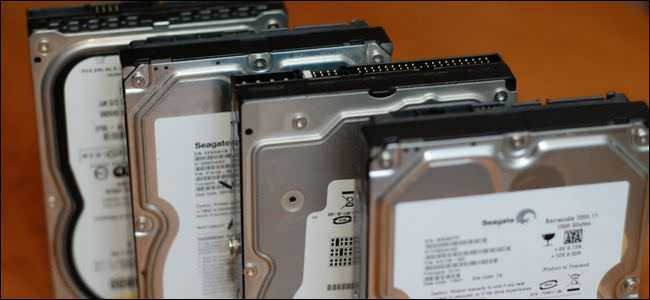
Secondly, you can get quality control and specifications with respect to the ready external hard drives. It's a common secret in the hardware industry that ready-made external hard drives rarely contain premium drives, and even if you like a particular company and you only equip your system with it, it does not mean that if you buy a ready-made foreign hard drive of the company will get the mattress of its materials. If you use an old hard drive or even buy a new hard disk you know exactly what you are getting.
Third, if you have a disk that contains data that you want to retrieve, you can easily use the outer shell to mount the hard disk and recover it. Of course, you can place the drive internally on your computer, but it is a bit more time-consuming, and it's likely that it can not be performed on some machines. And, on most laptops, it's impossible to add an extra indoor unit.
Finally, you will buy a case that will have a long-term value, since you can place inside it any unit you want. When you buy a ready outdoor unit, the case is in perfect combination with the hard drive it carries inside it and sometimes it is literally glued together. You can not just open the case of a Western Digital MyBook and put any old unit you have. So when you want to upgrade your external drive to another time, all you have to do is replace the disc rather than buy a whole new product.
With all this in mind, let's see how you will make an assessment of your old disc and thoughts about choosing the case.
Select the disc
If in your drawers you have a stack of old drives that dust off by taking up space in your office and thinking of buying a case for one of them, there are a few things to keep in mind.
Your primary concern when reusing an old hard drive is to find one that is in good condition. You should definitely check the SMART settings (a process similar to its history healthof the hard disk). If the drive turns out to have a bunch of red flags, like thousands of bad sectors, you should forget about it and go to the next disk or buy a new one.
A very good one free program that can directly check the status of your disks is the CrystalDiskInfo

Select the case
The tough ones discs έρχονται σε δύο μεγέθη. Στην μορφή των 3,5″ που συνήθως προορίζονται για μηχανήματα desktop και έχουν περίπου το μέγεθος ενός μέτριου χαρτόδετου βιβλίου μυθιστορήματος. Είναι μεγαλύτεροι από αυτούς που χρησιμοποιούνται σε laptop, αλλά είναι σχετικά φθηνότεροι σε σχέση με το ποσό αποθήκευσης που μπορούν να χωρέσουν. Απαιτούν επίσης μια εξωτερική πηγή ενέργειας, το οποίο σημαίνει ότι θα πρέπει να συνδέσετε την εξωτερική θήκη τους με μία πρίζα στο τοίχο σας.

SSDs and mechanical hard drives for laptops come in a 2,5 μορφή format. These discs are about the size of a smartphone. Most 2.5 δίσ disks generally do not require an external power supply, so their cases can only contain one cable that connects to your computer and carries data and power.
The downside to these discs is that they usually have a smaller capacity (or if you want much more expensive in terms of capacity - price), and unlike 3,5 δίσ discs which have a set height, 2,5 δίσ discs can be 7 mm, 9,5 mm, even 12,5 mm high.
You realize that you need to identify the type of hard drive you have in your hands and buy the corresponding case.
Disk speed and capacity
Since you will probably have to connect the external hard drive via USB, driving speed will not make a huge difference in terms of performance. Technically, RPMs will have a small advantage over USB 3.0 connections (especially when searching for and recording too many small files), but for most people this difference is possibly negligible.
Disk speed, however, is a factor in terms of damage to the drive, as faster units produce more heat. If you have a number of candidate discs to make them outdoors, then prefer one at a slow speed (like 5400 RPM), since you have a high probability of increased disk life over discs with higher spin speeds (such as 7200 and 10.000 RPM).
If your drive is rarely used, such as backing up files once a month, then the speed difference (and the resulting heat) is not a matter. If you plan to use the drive continuously, then choose a slower disk.
Now, on the issue of disk capacity, there is only one real constraint you need to know. Old 2.0 cases do not have the hardware / firmware to support larger drives, so keep in mind for large discs (2TB +), prefer a newer technology case.
Interface
We are finished with this annoyance and most people are no longer a subject. Hard disks are internally connected to a computer either via a PATA or a SATA connection.
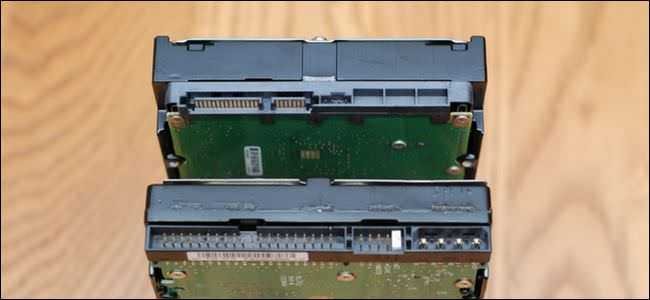
PATA connections (also known as IDE) dominated the hard disk market from the middle of the 1980 and up to about 2005, and had a large pin-like connector that looked like a printer cable, as shown in the lower disk of the above image. There was also a very large plug for power supply. The SATAs that were introduced to 2003 and now dominate the market have a double very skinny oblong connector, as shown in the photo above the PATA hard drive. The data is transferred to the narrow plug and the power is transferred through the larger plug.
Chances are you have a SATA disk, as it is old and used unless it is a newer unit used on a very old computer. But check your disk and compare it to the above image before you start looking for a case.
Choosing the case
Once you locate all the relevant features on your hard drive, it's time to buy a compatible case. When you visit the electronics store, you should be aware of the following. Although our goal is to educate you as a consumer, so that you can choose exactly the right case for your needs, we should not let you know what's on store shelves, and that is why we have included a section for special cases We suggest you.
Internal Interface and disk size: When purchasing an external hard drive case, your first thought is to choose an enclosure whose connection fits the interface and the size of your disk. Do you have a 2,5 φο portable hard drive with a SATA connection then you want a SATA 2,5 case. If you have an old 3.5 δίσ drive with a PATA connection then you need a case that supports 3,5 PATA / IDE.
Finally, those of you who buy a case for a 2.5 ″ disc should consider the aforementioned disc height version. Check the fine print on your case to see if the drive bay can accommodate 12,5mm, 9,5mm or 7mm discs, or all or some of the above. Fortunately, 12,5mm discs are quite rare, and almost every 2.5 λειτουργεί case works with both 9,5mm and 7mm thick discs.
External Interface: Second in importance is matching the external interfaces. You want to connect your case via USB 3.0, via FireWire, via one doors eSATA (which is very fast, but not available on many computers)?
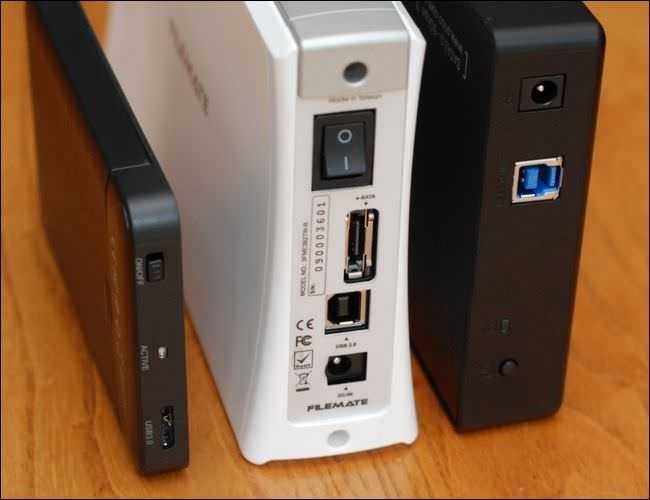
In the photo above you can see a variety of common types of interface: on the left we have a 2,5 θ case with micro-B socket, in the center we have a bulky case that has a USB 2.0 type B connection and an eSATA, and finally on the left we have a 3.5 θ case with a USB 3.0 type B connection. Note that 3,5 ″ drives have a power outlet as they need enough power to run desktops.
Above all, carefully check the specifications of the case you are buying to ensure you get exactly what you need. Usually cheap cases may seem an opportunity until you realize that they are so cheap because they only contain a USB 2.0 connection.
Enclosure - Material: Hard disk cases come in two materials: plastic and metal. For infrequent and short-term use, it does not matter what material the housing is made of. But for outdoor units that will have a lot of use (especially if you plan to leave them on all day), a metal construction turns the housing into a large hard drive heatsink and is a must. Heat is the enemy of all electronics and every detail that can keep your hard drive cool is worth it.
So if you use your outer disk for long-term gaming sessions then an aluminum case makes fantastic heat dissipation. For short periods of backup, plastic housings are not particularly disturbing in terms of heat dissipation.
Finally, we suggest that you eliminate the thought of buying metal material for reasons of "durability". You will simply waste money without result. Think about the chances of accidentally dropping your external hard drive from your desk to the floor.
Instead of paying a lot of money for metal protection from local drops spend that money to buy a bone case transports where you have a higher chance of them falling out of your hands when transporting them from your house to your friend's house.
The alternative: Docks and Tethers
There are some separate hardware hardware solutions for external hard drives and it would be a failure to mention you. These are the docks and the Tethers cable. While a suitable case is designed for long and long-term use, sometimes you just want to run your old discs for fast reading or copying. In addition, Docks support multiple sizes of hard drives and often include features such as full copying with a click in case you want to clone a drive.
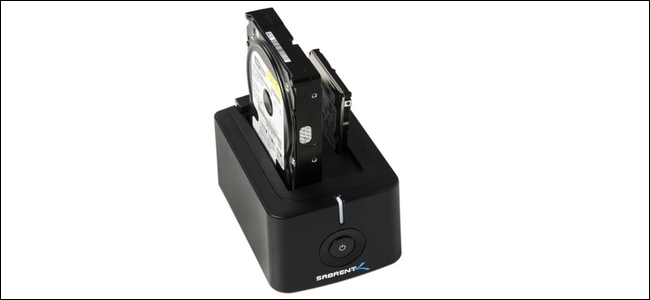
Also these solutions are ideal for replacing a hard drive of your system by simply cloning it with almost no downtime than just a restart. These components do not provide protection to the unit (generally they do not surround the hard drive, so it is dusty and vulnerable to water).
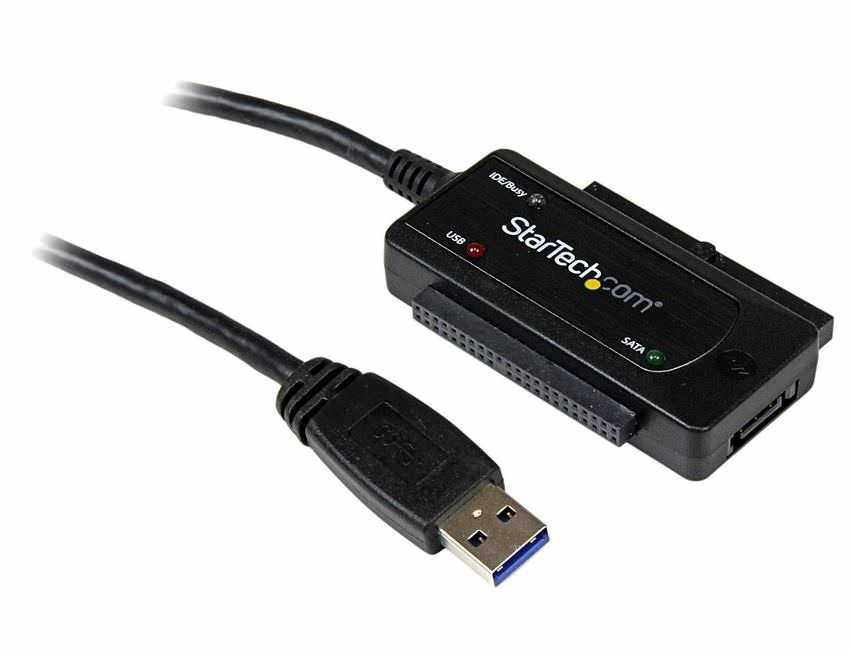
Last Thought: At the end of your market research, you should not be afraid to spend some extra euros for better opportunities. The difference between an old USB 2.0 model with outdated features from a newer improved company model with a USB 3.0 connection, large disk support, and more is almost always a round of 5-10 euros. It's worth the extra cost and you'll understand when you'll need three hours more to transfer your movies with a USB 2.0
Place
If you have understood all of the above regarding the type of internal connections, the types of cases, etc., then the placement is now playful. If you buy a pouch that does not require a tool then you can literally put your hard drive in the case like you put the battery on your mobile phone.

In the above photo you can see two cases that do not require a screwdriver thanks to the compact design of the SATA data and power connection. You can open the tray, pull the tray in until it snaps into place, and then put the cover back on.
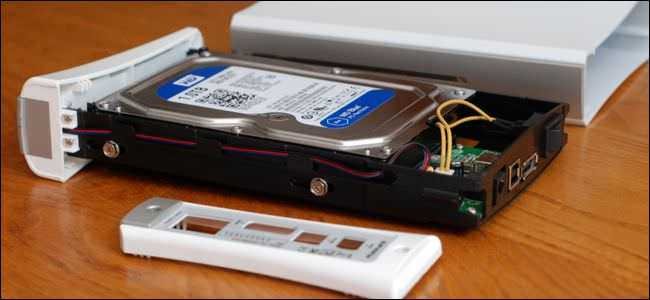
If the case has screws, there are usually two that hold the case head and, just like on a desktop, another four screws to mount and secure the tray in its case. At best, you'll need a cross-stroke and extra time of sixty seconds to install the unit.
Finally, if you buy a new disc, put it in its case and connect it to your computer and see nothing, do not panic. The drive is not formatted yet so your operating system will ignore it until you do something. In such cases, you should format the disk with Windows Disk Manager, or the disk utility in OSX, or use a tool such as Gparted on Linux. After configuration the drive should appear just like any other drive.





